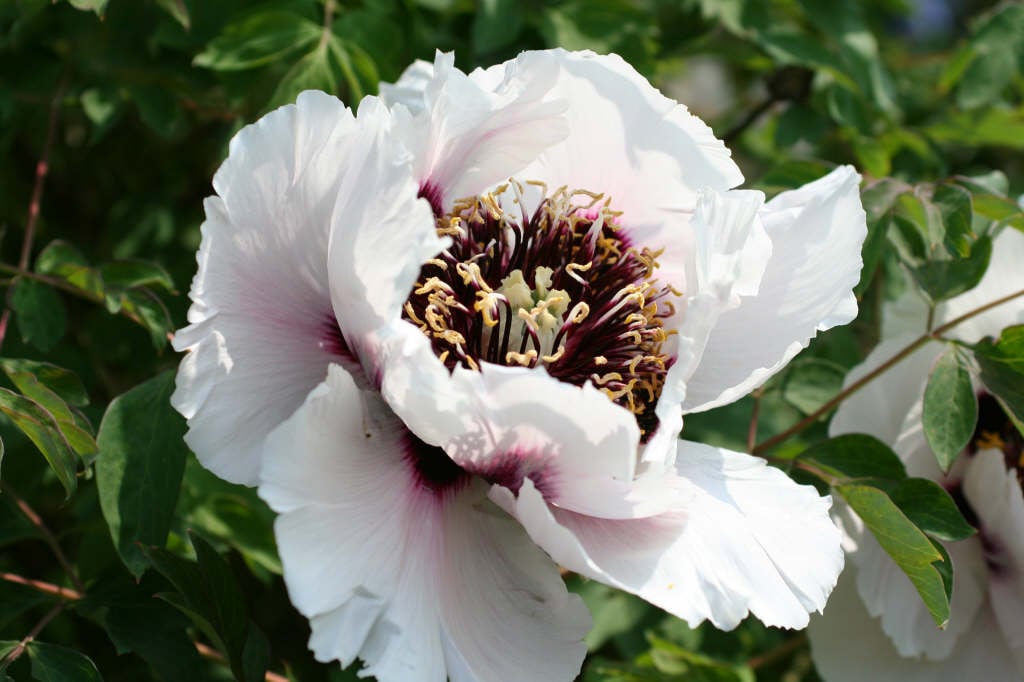Paeonia rockii (S)
Rock's tree peony
a lax deciduous shrub to 2m tall and wide, with dark green, divided foliage and semi-double white flowers 25cm across in late spring and early summer, each petal with a bold deep maroon blotch at the base
Size
Ultimate height
1.5–2.5 metresTime to ultimate height
5–10 yearsUltimate spread
1.5–2.5 metresGrowing conditions
Moisture
Well–drainedpH
Acid, Alkaline, NeutralColour & scent
| Stem | Flower | Foliage | Fruit | |
| Spring | White Purple | Green | ||
|---|---|---|---|---|
| Summer | White Purple | Green | ||
| Autumn | ||||
| Winter |
Position
- Full sun
- Partial shade
Aspect
South–facing or West–facing
Exposure
Sheltered Hardiness
H6Botanical details
- Family
- Paeoniaceae
- Native to GB / Ireland
- No
- Foliage
- Deciduous
- Habit
- Bushy
- Potentially harmful
- Pets (dogs, cats): Skin irritant. For further information and contact numbers regarding pets, see the HTA guide to potentially harmful plants
- Genus
Paeonia may be herbaceous perennials or deciduous sub-shrubs with large, divided leaves and showy large bowl-shaped flowers, usually in early summer
- Name status
Correct
- Horticultural Group
- Shrubby peonies are sparsely branched deciduous shrubs leaves divided into several finger-like lobes, and bowl-shaped flowers in late spring or early summer
- Plant range
- China
How to grow
Cultivation
Best grown in neutral, humus rich soils, but slightly acid or slightly alkaline soils are tolerated. Good drainage is essential. Ideally, plant in a sunny position. Can be grown in light shade, but the plants may become straggly. Fully hardy, but young foliage and flowers can be damaged by late frost. See tree peony cultivation for further information.
Propagation
Propagate by seed, seeds are doubly dormant needing two winters to germinate. There is a good chance that the young plants will be true to type or similar. Propagate by grafting, from semi-ripe cutting or try layering
Suggested planting locations and garden types
- City and courtyard gardens
- Cottage and informal garden
- Flower borders and beds
Pruning
Pests
May be susceptible to leaf and bud eelworm and soil-dwelling swift moth larvae
Diseases
May be susceptible to a virus, honey fungus, Verticillium wilt, peony leaf blotch and peony wilt
Love gardening
Sign up to receive regular gardening tips, inspiration, offers and more
View our Privacy Policy
Get involved
The Royal Horticultural Society is the UK’s leading gardening charity. We aim to enrich everyone’s life through plants, and make the UK a greener and more beautiful place.

